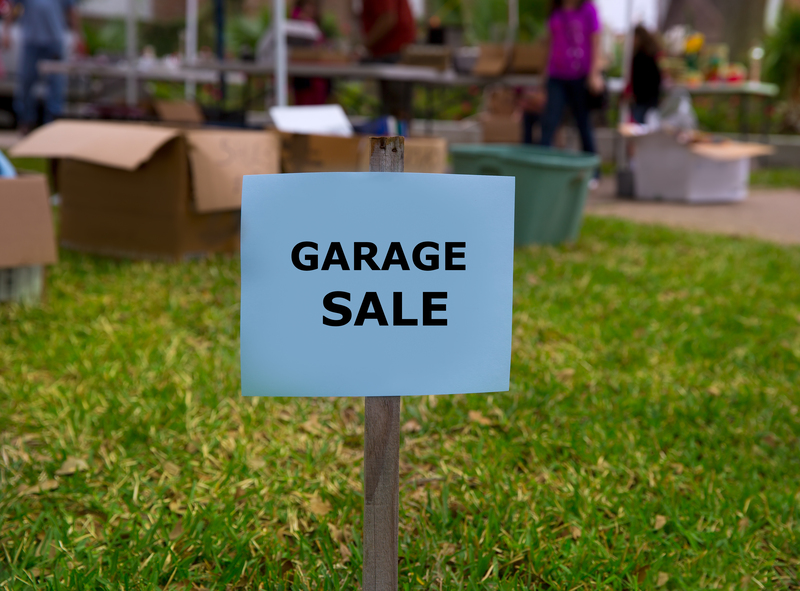Creative Ways to Dispose of PPE Waste Responsibly
The recent global health crises have made the use of Personal Protective Equipment (PPE) such as masks, gloves, and face shields a daily necessity. However, the increase in PPE usage has also led to a surge in PPE waste, raising environmental and health concerns. Although PPE is designed for single-use to protect human health, disposing of it irresponsibly can pose severe risks to ecosystems and public safety. In this extensive guide, we'll explore creative, effective, and responsible ways to dispose of PPE waste, integrating both practical strategies and innovative approaches.

Understanding PPE Waste and its Environmental Impact
Before delving into disposal methods, it's crucial to understand what PPE waste is and how it impacts our environment. PPE waste includes discarded masks, gloves, gowns, face shields, and other protective items that may be contaminated or non-contaminated. Improper disposal can lead to:
- Pollution of waterways and oceans due to non-biodegradable plastics
- Threats to wildlife from ingestion or entanglement
- Spread of diseases if contaminated items are reused/handled improperly
- Littering in public spaces, diminishing community hygiene
It's imperative to seek responsible PPE waste management solutions that prioritize both public health and environmental safety.
Traditional Methods of Disposing PPE Waste Responsibly
1. Proper Segregation and Collection
The first step for responsible PPE waste management is adequate segregation. Designate separate bins labelled 'PPE Waste Only' in public spaces, homes, and workplaces. Bags should be leak-proof and durable.
- Color-coding bins can help prevent accidental mixing with general recyclables.
- Educate users about the importance of using these distinct bins.
2. Sealing and Bagging PPE Waste
Before transport, PPE waste should be sealed in a bag. Using double-bagging for contaminated PPE may be recommended for extra safety.
- Seal bags tightly with ties or tape to prevent spillage.
- Clearly label PPE waste bags to alert sanitation workers.
3. Sending to Incineration Facilities
High-temperature incineration is a common method for safe disposal of PPE. Incineration kills contaminants and reduces bulk but can create air pollution.
- Work with local authorities or certified waste contractors for safe incineration.
- Check for emission standards to minimize environmental impact.
Creative and Innovative Ways to Dispose of PPE Waste
Beyond traditional methods, innovation is key to effective PPE waste management. Here are novel and eco-friendly approaches to dealing with PPE waste responsibly:
1. Upcycling Non-contaminated PPE
Some PPE items, if clean and non-contaminated, offer upcycling opportunities. This not only reduces landfill waste but also adds value.
- Art Installations: Creative communities and artists have turned used PPE into impactful art pieces, raising awareness about plastic waste.
- Furniture Filler: Shredded, sanitized masks and gloves can be used as stuffing in non-essential furniture such as outdoor cushions.
Note: Only attempt upcycling with PPE that is clearly uncontaminated.
2. Transforming PPE Into Construction Materials
Recent research has explored using shredded masks and gloves as ingredients in road construction and bricks.
- Eco-Bricks: PPE waste can be mixed with concrete to create durable bricks, reducing the need for virgin plastic in construction.
- Roads: Engineers have experimented with incorporating polymer fibers from PPE into asphalt for increased road durability.
3. Partnering with PPE Recycling Programs
Several organizations now offer PPE recycling services. These companies collect usable items and process them into new materials through mechanical or chemical recycling.
- Terracycle: Offers a PPE recycling box program for businesses, schools, and hospitals.
- Local Waste Innovators: Search for regional startups or recycling centers accepting PPE waste.
Bonus Tip: Some companies even turn recycled PPE into park benches or fencing!
4. Compostable and Biodegradable PPE Alternatives
Another responsible PPE waste solution is to use compostable PPE wherever possible. More brands now offer plant-based masks, gloves, and gowns that decompose under industrial or even home-composting conditions.
- Check Packaging: Ensure that items are certified compostable (look for symbols like ASTM D6400 or EN13432).
- Composting Know-how: Only compost non-contaminated PPE at home; otherwise, use an industrial composting facility.
5. Educational and Awareness Campaigns
Train and educate communities about the importance of creative PPE waste disposal. Creative signage, school projects, and social media can help.
- Interactive Programs: Launch competitions for schools and artists to find new uses for clean PPE waste.
- Workshops: Host sessions teaching safe handling, upcycling, and segregation techniques.
Guidelines for Safe Handling of PPE Waste
Safe handling is essential to prevent cross-contamination and infection.
- Always use gloves when handling discarded PPE.
- Sanitize hands thoroughly after disposal.
- Avoid touching the front of masks or contaminated surfaces.
- Clean bins regularly with disinfectant.
- Do NOT throw PPE in recycling bins unless confirmed by local guidelines.
Reducing PPE Waste: A Proactive Approach
While responsible disposal of PPE is critical, reducing usage and exploring alternatives can further curb environmental impact.
1. Reusable PPE Where Appropriate
Switch to washable cloth masks or reusable face shields in environments where single-use is not mandated.
- High-quality cloth masks can be washed and reused, reducing waste volume.
2. Conscious Consumption
Opt for PPE only when necessary. Avoid hoarding and overuse.
3. Support for Sustainable PPE Manufacturers
Buy PPE from companies committed to sustainable materials and ethical manufacturing.
The Role of Governments and Organizations in PPE Waste Disposal
Effective PPE waste management requires support from authorities:
- Policy Development: Governments can introduce clear guidelines for PPE segregation and disposal.
- Infrastructure Investment: Funding dedicated collection and recycling centers for PPE waste.
- Public-Private Partnerships: Collaborating for innovative recycling and upcycling initiatives.
The Future of PPE Waste Management: Trends and Innovations
Technological advances are shaping the future of environmentally friendly PPE waste disposal:
- Chemical Recycling: New processes break down plastics in PPE to usable oils and chemicals, reducing landfill.
- Biodegradable Innovations: Ongoing research into PPE made from natural fibers such as hemp or bamboo.
- Tracking and Smart Bins: Internet of Things (IoT) equipped bins that notify waste collectors.
Staying informed about these trends allows individuals and organizations to adapt their strategies and optimize PPE waste reduction.
Conclusion: The Power of Responsible Action
The COVID-19 pandemic has emphasized the importance of PPE, but it has also highlighted the urgent need for responsible, creative PPE waste disposal. From traditional segregation and incineration to innovative recycling, upcycling, and educational outreach, there's a spectrum of strategies to tackle this challenge. Everyone has a role to play--from individuals and families to governments and global organizations.
By embracing these creative ways to dispose of PPE waste responsibly, we safeguard not only public health but also the wellbeing of our planet. As we look to a future beyond the pandemic, let's ensure our PPE doesn't pollute the world we're trying to protect. The most sustainable solution combines reduction, responsible disposal, and a dedication to innovation in PPE waste management.

Frequently Asked Questions (FAQs)
How can I safely dispose of used masks and gloves at home?
- Place in a dedicated PPE waste bag.
- Seal the bag tightly and discard with general waste (not recycling).
- Wash your hands thoroughly after handling.
Are there PPE items that can be recycled?
Generally, most single-use PPE is not accepted in regular recycling streams. However, specific programs do exist to recycle PPE waste. Contact local authorities or specialty programs like Terracycle for details.
What should businesses do with bulk PPE waste?
- Contract with certified medical waste disposal services.
- Train staff in safe segregation and handling.
- Explore partnerships with recycling or upcycling organizations.
Can PPE be composted?
Only compostable PPE (such as some plant-based masks) are suitable for composting. Standard PPE made from synthetic fibers should never be composted.
Final Thoughts
With creativity, awareness, and the right infrastructure, we can make a significant impact on reducing the environmental footprint of PPE waste. Adopt sustainable habits, support innovative solutions, and advocate for responsible practices in your community. Together, we can turn the tide on PPE pollution!